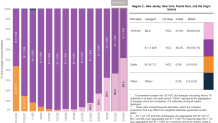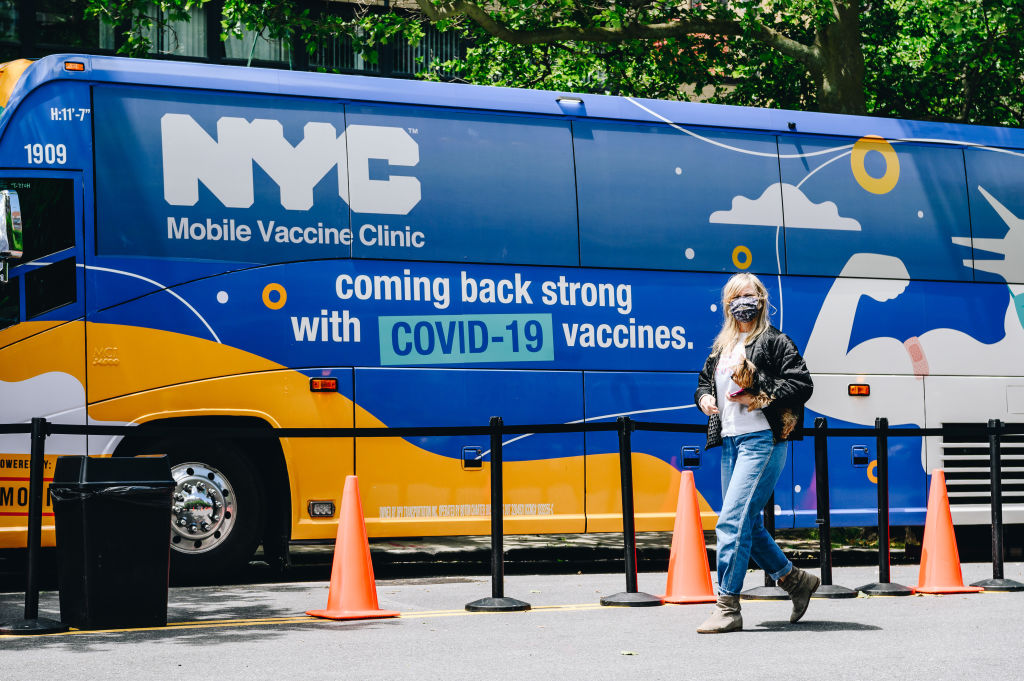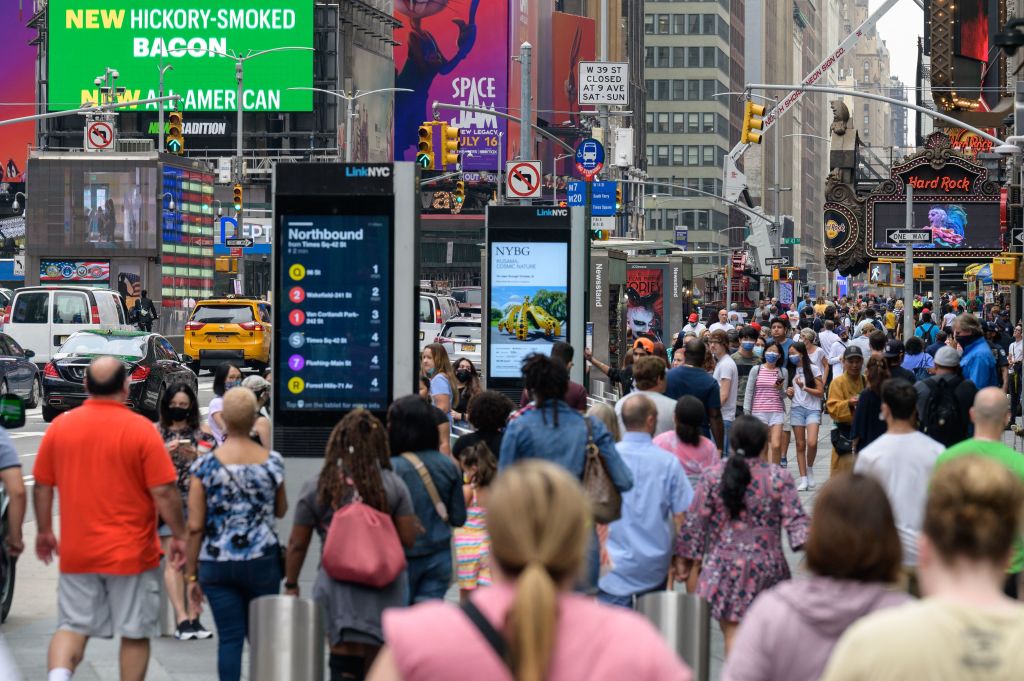What to Know
- Mayor Eric Adams says NYC's school and daycare mask mandate for kids age 2 to 4 will lift on April 4 if core COVID numbers stay low, which they are right now; children under 2 haven't been required to mask up
- Asked about the existing private-sector vaccine mandate, a strictest-in-the-nation rule implemented by his predecessor, Adams said he's taking things one step at a time and isn't looking at that subject yet
- Now, an omicron subvariant, BA.2, is fueling fresh concerns over case increases in NYC, but officials say they do not expect any significant resurgence and point to ongoing declines in hospitalizations and death
New York City Mayor Eric Adams is revealing a new "blueprint" for lifting COVID mask requirements for younger children on Tuesday, nearly two weeks after he approved the rule's end for vaccine-eligible schoolchildren and as yet another variant stokes fresh concerns about rising cases in the hard-hit five boroughs.
He also shed more light on the ongoing private-sector COVID vaccine mandate. That rule is not expected to change anytime soon. But the mask order for kids will.
If the city's core COVID numbers continue to show a core level of risk, Adams said masks will be optional for children aged 2 to 4 in schools and daycares on April 4.
Get Tri-state area news and weather forecasts to your inbox. Sign up for NBC New York newsletters.
He emphasized the "if the numbers continue" element of his statement and said he and his health commissioner chose the date because it allows for two incubation periods to pass to assess the trends after lifting the mandate for K-12.
Right now, the community COVID alert level citywide is low, under the new benchmark system Adams unveiled earlier this month. It doesn't get any lower. So far, the risk level hasn't changed since the school mandate lifted on March 7, which the mayor called a "great sign" as he declared it time to "peel back another layer."
See Mayor Adams' full Tuesday press conference in the player below.
The Democrat has faced pressure from some parents over the rule remaining in effect for the youngest kids in recent weeks, including from one frustrated parent in the Bronx who had demanded a sitdown -- and an immediate mandate change.
But for every call or comment he gets like that, Adams says he gets one from a parent or child who wants to keep the mandate in place.
"We can't go by the noise. We have to go by the science and the safety of our children. We have to get this right," Adams said. "Let's not think this is one-sided because it's not. The only way you do it right is to follow the science and follow the numbers. I can't have my city and our city close down again."
Kids younger than 2 have not been subject to mask mandates since the pandemic started. Asked about the existing private-sector vaccine mandate, a strictest-in-the-nation rule implemented by his predecessor, Adams said he's assessing steps slowly and transitionally and isn't prepared just yet to set that end date.
"We're going to do it layer by layer and each layer we peel back we're going to do an analysis, 'Are we OK?' and we have to pivot and shift and come back here in a week and say we're going to do something different, we're going to do that," Adams said.
"When we feel that it's the right time to look at that, if we do so at all, because the work environment is an important environment, we're going to make that determination," he added. "We're not there yet."
The developments come as the BA.2 COVID strain, a subvariant of omicron often referred to as deltacron or the "stealth" variant, is fueling transmission increases in parts of the city, especially Manhattan, and renewed leeriness for an anxious public keenly aware of the many setbacks in reopening the city has faced the last year.
As of Tuesday morning, the city's rolling weekly case average is up 12% over the rolling average for the prior four weeks. Hospitalizations and deaths, both lagging indicators, are down 46% and 55%, respectively, by the same parameters.
And while the double-digit percentage increases have garnered attention, officials at all levels of government are stressing the importance of context they try to assuage the latest public concerns regarding the pandemic.

Gov. Kathy Hochul sought to do that a day ago as she delivered her first live COVID briefing since dropping the statewide school mandate earlier this month.
New York's seven-day new case average per 100,000 residents is up 30% in the last week. While that may appear to be a significant increase, the raw numbers aren't that far apart, Hochul pointed out. It's the difference between 8.3 new COVID cases per 100,000 residents and 10.8 new rolling cases per 100,000.
A few months ago, the state was seeing 400 new cases per 100,000 residents.
And while the statewide rolling positivity rate is the highest it's been since the end of February, it remains a touch below 2%. New York City's rolling average is 1.4%.
Most importantly, COVID hospitalizations remain starkly down. On Monday, Hochul reported 901 hospitalizations statewide, a single patient increase over Sunday, the latter marking the lowest total since Aug. 2. Daily deaths are also quite stably low, with Hochul reporting six new COVID fatalities overnight.
And vaccination trends are the only ones continuing their steady trends up, albeit not at a fast enough pace regarding children as New York officials would like.
More COVID-19 Coverage
"We're monitoring the numbers intensely," Hochul said, referencing the recent uptick in infections while hospitalizations remain at a seven-month low. "We’ve never taken our foot off the gas when it comes to our preparedness for dealing with this pandemic. We’ve never had a high-five that it’s over. We’re adapting to the circumstances and reopening in a way that I still believe should continue."
"We've learned a lot. We know how to handle this. We are not in alarmist mode," she added. "We are not panicking over this. We're just watching the numbers."
Adams and his new health commissioner, Dr. Ashwin Vasan, have pushed a similar message these last few weeks. They also say much is yet to be learned about the BA.2 variant. At this point, there is no evidence to suggest it is more vaccine-resistant or causes more severe infections, though more data is needed.
While BA.2 does appear to be "inherently more transmissible" than the original omicron strain, the World Health Organization has said, experts say they don't expect it to trigger a major resurgence given high vaccination rates and so many people having been recently infected with the first omicron strain.
According to the CDC's Tuesday update, the BA.2 variant accounts for 52% of COVID circulating in the region that includes New York and New Jersey, up from 39% a week ago. It is now more prevalent than the original omicron strain locally.
By comparison, BA.2 is responsible for about 35% of new infections nationally, up from a quarter last week.
The latest data from New York's Wadsworth Center shows omicron has accounted for 99.5% of all positive state samples tested there since January, while the BA.2 variant now makes up 42% of that, one of Wadsworth's scientists said Monday.
"It is not surprising but it has increased more slowly in New York and elsewhere in the U.S. than in many other countries," she said of its rate of growth in prevalence.

New York state's health commissioner, Dr. Mary T. Bassett, sought to underscore that point, saying the BA.2 variant "is creeping up, but it hasn't been the cliff that all of us recognize with omicron.
Other countries have seen a more familiar spike, Bassett said, noting patterns of transmission are directly related to vaccination. "So far we have seen these upticks but we haven't seen this vertical type rise," Bassett added.
Asked about accurately tracking case spikes at a time when most people have access to at-home testing, she said the state has pivoted its focus to hospitalizations to tell the most accurate picture. And it continues to develop.



